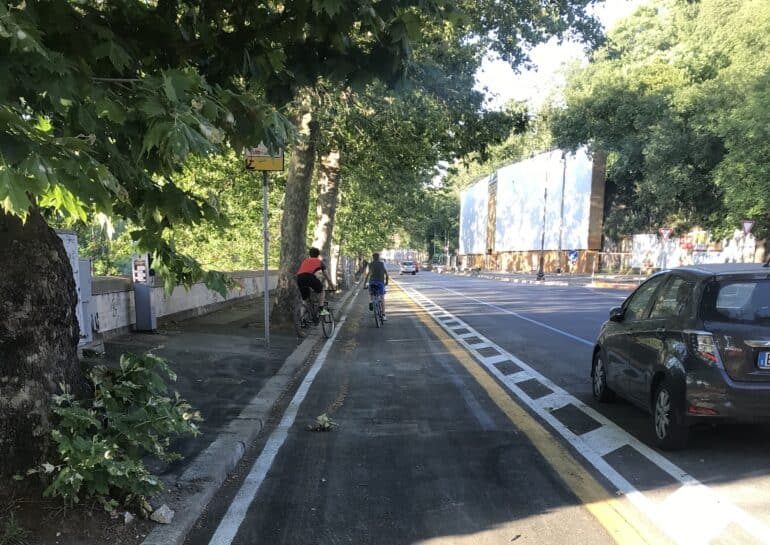Why are there so many bikes on the road?
Could Rome, a city known for aggressive driving and leisurely walks, become the next big biking capital?
Phase II Rome – The long lines at grocery stores have been replaced by new long lines at sports stores, as Romans race to purchase bicycles, scooters and hoverboards. The usual crowds of tourists are missing, but small bands of new cyclists can be seen all over the city, roaming far and wide.
Starting from May 4th, Italians received a new push towards sustainable transportation, with financial incentives of up to €500 per person. The response has been strong. Bike shops and sporting goods stores have reported floods of customers and temporary stock-outs of bicycles for both children and adults.
Plans for sustainable transportation methods have been in the works for some time, but the need to help citizens get back to work after COVID-19 lockdown, while reducing the risk of disease transmission on public transportation has added new urgency to the issue.
Mayor Raggi, in an interview on Radio Cusano Campus, explained, “We are building bike lanes, we are thinking of dedicated space on main roads for cycling. We want to encourage alternative forms of transportation by encouraging the purchase of electric bikes. We must discourage private traffic, because, with limitations on the use of public transport, we risk being invaded by cars..” (adapted from the Italian original)
This convergence of challenges – individuals wishing to avoid public transportation and officials seeking to avoid large numbers of cars on the road – has led to several new initiatives to promote safe and sustainable ways to travel around the city. Could Rome, a city known for its aggressive driving and leisurely walks, become the next big biking capital?
What are the new incentives?

On May 13th, the Government adopted the Decreto Rilancio (Relaunch Decree), a massive €55 billion stimulus package with broad ranging measures to support incomes for individuals, reduce costs for business, prop up the tourism industry and seasonal workers, help students and universities, and enable alternative forms of transportation and mobility.
Specifically, the Decree provides for the “Bonus Bici” and “Bonus Mobilita.” These financial incentives will reimburse citizens for 60% of the cost (up to €500) for new bicycles, e-bikes, segways, hoverboards, and scooters, as well as to support bike and scooter sharing (car sharing is not included)
The Bike Bonus is seen as stimulus for green transportation in Rome, as well as a way to support the national cycling industry. Minister for the Environment, Sergio Costa, has said that the Bonus Bici is an environmental measure “which is simultaneously a tool for development and employment… It supports positive supply chains in the industry. Italy is the second largest bike manufacturer in the world… [the Bonus Bici] is part of the support for green mobility which will be the greatest ally of cities in the post-COVID recovery in terms of mobility.” (adapted from Italian)
Who gets to enjoy these new advantages?
The incentives are available to Italian citizens in urban areas with populations greater than 50,000 people. Reimbursements are good for purchases made from May 4th through December 31st 2020, and can be done retroactively. The Bonus will soon have its own app, with which citizens can request reimbursements and retailers can use to make the discount immediately in stores. Rome joins 13 other metropolitan cities to enjoy the incentives.
Two other changes will make cycling better for everyone

Paola De Micheli, Minister of Infrastructure and Transportation, spoke to the Corriere della Sera about additional measures to make the streets of Rome safer for cyclists, “We will modify the rules of the road and dedicate resources for more bike paths.” (adapted from Italian).
The Relaunch Decree includes two other significant provisions to make streets safer for cyclists:
- At street intersections, bikes, e-bikes and electric scooters will be able to stop at “advanced stop lines,” (also know as “advanced stop boxes” or “bike boxes”) to be located three meters in front of automobile stop lines. These are already widely used in Belgium, Denmark, and the UK.
- Cycle lanes will be added to several main streets (delimited by a white stripe) to allow for the movement of bicycles and scooters in the same direction as traffic. Watch out though: cars will be able to use the lane to turn or navigate the roadway.
Want to go cycling? Check out the best cycling routes in Rome






